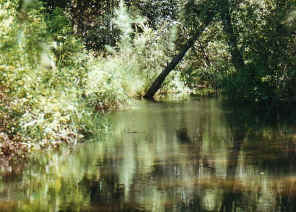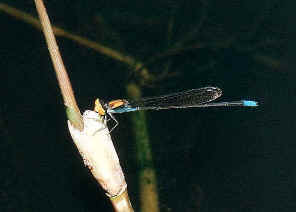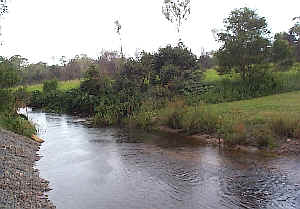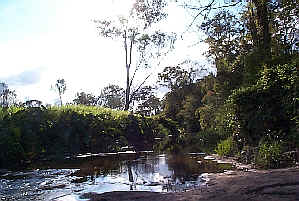Dragonflies and Damselflies Habitats
Dragonflies and Damselflies lay eggs in flash water where the larva grow. Larvae need fairly precise habitat and sensitive to water pollution. Dragonfly adult is a predator in the sky and preying on flying insects. Larva may spend one to three years in water, depend on species, while adults live only a few weeks.
The male dragonflies and damselflies will return to their breeding ground and stay there when they mature and ready for mating. Most male Skimmer Dragonflies perch on their favorite spot and overlook their territory. The male Hawker and Emerald will usually fly, non-stop within a fixed path over their territory. In most dragonflies and some damselflies, females only visit their breeding site to mate and lay eggs. They will leave the breeding sit after laying eggs, until next batch of eggs are ready. More information can be found in the Mating and Reproduction page.
Still water - pond
There are some small ponds near Wishart Outlook along the Bulimba Creek. Those ponds are separated from the creek, however, the water will run to the creek when overflow. Some species of dragonflies mostly found on ponds, such as the Common Glider and Yellow-striped Flutter. Other dragonflies which habitat in most type of water can also easily be found on ponds, such as Yellow Emperor, Australian Emerald, and most Libellulidae. The second picture shows a resting Common Gliders.
Slow running water with weeds
Many dragonflies like slow running water with weeds in the water. In this area you will find Australian Emerald Dragonflies flying around. The Australian Tiger will always occupy the best perching position, which is usually the emergent vegetation or fallen branches in the pools or slow running water. Where the dragonfly can oversee a large piece of water as his territory.
Slow running water with sandy shore
Scarlet Percher Dragonflies like to perch on stone or creek sand bed, as most other dragonflies will not do. On the sand bed we can also find the Bog Skimmer.
Slow running water with large water surface
Gold-fronted Sprite Damselflies can be found on slow running water with large surface. They usually fly very close on the surface of water, sometimes they rest on small floating materials. Blue Sprite Damselflies are one of the most common damselflies found in Brisbane waters, can also be found flying closely on the water surface.
Fast running water with rocks
Not too many dragonflies like to perch on rock, Blue Skimmer is one of them. Most of the Bulimba Creek are fast running water with rocks. So we can find Blue Skimmer very easily along the creek.
Fast running water with dense grasses
Some parts of the Bulimba Creek in Wishart and Eight Mile Plans are fast running water with very thick grass, where we can easily find the Ochre Threadtail Damselflies and the Common Bluetail Damselflies. Flame-head Sprite Damselflies is the species that we can only find in fast running water. Among those grass, we can sometimes find the Aurora Bluetail Damselflies and Midget Whisp Damselflies.
Plants under water
Most skimmer dragonflies like to perch on plants with roots in water. Most LIBELLULIDAE can be found in this area, such as the Blue Skimmer, Bog Skimmer and Blue Scarlet.
Boggy seepage
The starting point of the Bulimba Creek is a boggy seepage. There is the dragonfly, Coastal Petaltail, and the damselfly, Coastal Flatwing, found only in this area. Some other species can also be found, such as the Pale Hunter, Australian Tiger and Yellow Emperor.
Bulimba Creek in Brisbane
- Most of the Dragonflies and Damselflies listed in this web site are found along the Bulimba Creek. Bulimba Creek is in the south-eastern areas of Brisbane and flows generally north into the Brisbane River. Along the creek there are the bushland and freshwater swamp lands. The creek flow across most of the southern suburbs in Brisbane, including Sunny Bank, Eight Mile Plains, Wishart and Mansfield. Along the creek, there are the fast and slow running sections, there are also still water ponds. Provides suitable habitats for dragonfly and damselfly larvae.


















